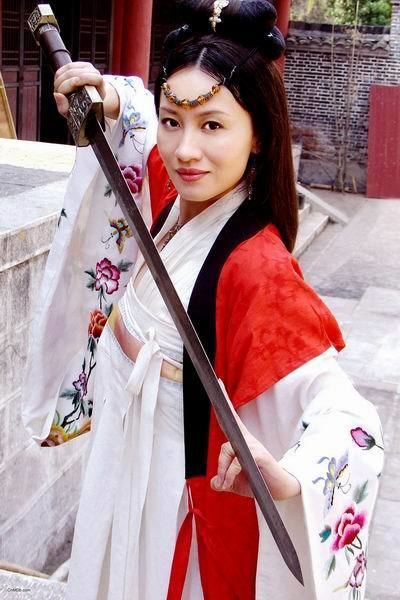Spouse Zhou Xian Great-grandparents Wanli Emperor Name Princess Changping Uncles Tianqi Emperor | Mother Consort Wang Grandparents Taichang Emperor Parents Chongzhen Emperor | |
 | ||
Died September 26, 1646, Beijing, China | ||
Zhu Meichuo (c. 1629 – 26 September 1646), better known by her title Princess Changping, was a Chinese princess of the Ming dynasty. She was a daughter of the Chongzhen Emperor, the last Ming emperor.
Contents
Life
Changping was born to the Chongzhen Emperor and Consort Wang. As Consort Wang died from illness not long after Changping's birth, the princess was raised by Empress Zhou. Changping had an elder sister, Princess Kunyi (坤儀公主), and a younger sister, Princess Zhaoren (昭仁公主).
When Changping was 16, her father arranged for her marriage to Zhou Xian (周顯; a.k.a. Zhou Shixian 周世顯), a military officer. However, their wedding was cancelled as Li Zicheng and his rebel army was approaching the capital, Beijing. When the capital eventually fell to the rebels, the Chongzhen Emperor started killing members of his household, including Princess Zhaoren. He shouted at Changping, "Why must you be born in this family?", and slashed his sword at her, cutting off her left arm. Changping fainted due to blood loss, but regained consciousness five days later and survived, while her father committed suicide by hanging himself on a tree.
In 1645, Changping asked the Shunzhi Emperor of the Qing dynasty, which had replaced the Ming dynasty, for permission to become a Buddhist nun. The Shunzhi Emperor refused and arranged for her to marry Zhou Xian per her father's wish. The couple treated each other with respect after their marriage. Changping died of illness a year later and was buried outside Guangning Gate (present-day Guang'anmen) in Beijing.
In popular culture
Changping had a greater impact on folklore and popular culture than history, with various stories revolving around the concept that she survived her early death.
One tale tells that Changping became a nun after the fall of the Ming dynasty. She practised martial arts and became a leader of the resistance movement against the Qing dynasty. She was nicknamed "One-Armed Divine Nun" (獨臂神尼) for her formidable prowess. One of her apprentices was Lü Siniang (呂四娘), a fictional heroine who assassinated the Yongzheng Emperor.
Changping appears as a major character in Louis Cha's novel Sword Stained with Royal Blood. She is called "A'Jiu" (阿九; lit. "The Ninth", implying she is the Chongzhen Emperor's ninth child) in the novel and had romantic feelings for the protagonist, Yuan Chengzhi. However, at the end of the novel, after losing an arm, she decides to become a Buddhist nun and changes her name to "Jiunan" (九難; lit. "Nine Tribulations"). She has a minor role in The Deer and the Cauldron, another novel by Louis Cha that is regarded as an unofficial sequel to Sword Stained with Royal Blood. In The Deer and the Cauldron, she has become a powerful martial artist and she accepts the anti-hero protagonist, Wei Xiaobao, as an apprentice.
The love story of Changping and Zhou Xian was adapted into a Cantonese opera, titled Di Nü Hua (帝女花; lit. Emperor's Daughter Flower). The opera was later adapted into a film and a television series.
